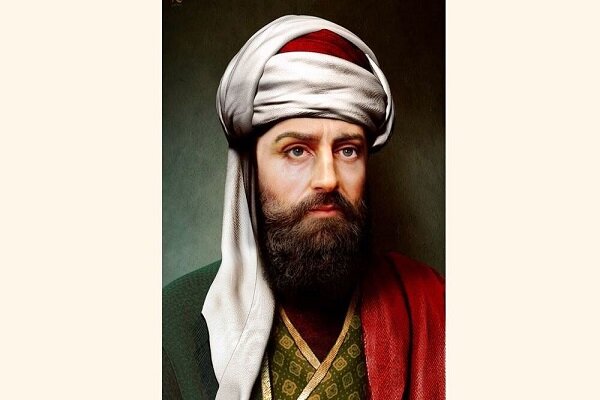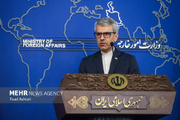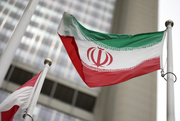Nezami Ganjavi whose formal name was Jamal ad-Dīn Abū Muḥammad Ilyās ibn-Yūsuf ibn-Zakkī a 12th-century Persian Muslim poet is considered the greatest romantic epic poet in Persian literature.
He brought a colloquial and realistic style to the Persian epic and his heritage is widely appreciated and shared by Iran, Afghanistan, the Republic of Azerbaijan, the Kurdistan region and Tajikistan.
As a narrative poet, he stands between Abul-Qasem Ferdowsi Tusi (ca. 940–ca. 1020), the poet of Iran’s heroic tradition and the author of the 'Shahnamah' (Book of Kings), and Jalaluddin Rumi (1207–1273), whose Divan-i kabir (Great Divan) and Kitab-i Masnavi Ma’navi (Spiritual Couplets) virtually define the forms of mystical lyric and mystical narrative poetry, respectively.
Nezami’s narrative poetry is more comprehensive than that of either Ferdowsi or Rumi, in that it includes the romantic dimensions of human relations as well the heroic, and plumbs the human psyche with an unprecedented depth and understanding. To be sure, a profound spiritual consciousness pervades his poetry, and to suggest otherwise would be to do him a disservice, but he does not, as does Rumi, make the whole focus of his work the evocation and articulation of the transcendent dimension of existence.
Nezami brought about a comparable expansion of the language of poetry, as well. He was among the first poets in Iran to wed the lyric style of court poetry, with its rhetorical intricacy and metaphoric density, to narrative form, and his language is as much a presence on the narrative stage as are the characters and events it depicts.
For him, discourse or eloquent speech (sokhan), or more particularly, the precise, beautiful, and signifying language of the poet, is his main or principal concern. For Nezami, poets have a nearly divine status.
He repeatedly draws attention to the shaping and educative function of sokhan in his books and goes so far as to liken his poetry to the Qur'an itself as a source of clear moral guidance, a bold assertion for his time. 1 In Makhzan al-asrar (The Treasure House of Mysteries), he writes, "The first manifestation of existence was speech .... Without speech the world has no voice."

The five long poems, known collectively as the Khamseh (Quintet) or Panj Ganj (Five Treasures), composed by Nezami in the late twelfth century, set new standards in their own time for the elegance of expression, the richness of characterization, and narrative sophistication. They were widely imitated for centuries by poets writing in Persian, as well as in languages deeply influenced by Persian, like Urdu and Ottoman Turkish.
Despite Nezami's great importance, we know little about the events of his life. As is so often true of Iran's premodern poets, there are virtually no contemporary sources about his life, and the occasional biographical notices that appeared in subsequent centuries are all too often charming fictions. Only his poems contain reliable biographical information.
His personal name was Ilyas and his chosen pen-name was Nezami (also spelled as Nizami). He was born of an urban background in Ganja. He appears to have spent his entire life in the same region, dying there approximately seventy-five years later. Nezami lived at a time when Iran or, more accurately, the Islamic world from the Mediterranean to Central Asia, was enjoying a period of great cultural efflorescence.
His poems show that not only he was fully acquainted with Arabic and Persian literature and with oral and written popular and local traditions, but was also familiar with such diverse fields as mathematics, astronomy, astrology, alchemy, medicine, botany, Qur’anic exegesis, Islamic theory and law, Iranian myths and legends, history, ethics, philosophy and esoteric thought, music, and the visual arts.
His strong character, social sensibility, and knowledge of oral and written historical records, as well as his rich Persian cultural heritage, unite pre-Islamic and Islamic Iran into the creation of a new standard of literary achievement. Being a product of the Iranian culture of the time, he not only created a bridge between pre-Islamic and Islamic Iran but also between Iran and the whole ancient world.
Nezami is mostly known for “Khamseh”, two copies of which are preserved in Iran were inscribed on UNESCO’s Memory of the World Register list in 2011.
“Khamseh” is a pentalogy of poems written in Masnavi verse form (rhymed couplets) with a total of 30,000 couplets.
These five poems include the didactic work Makhzan ol-Asrar (The Treasury of Mysteries); the three traditional love stories of Khosrow and Shirin, Leili and Majnun, and Haft Paykar; and the Eskandar-nameh, which records the adventures of Alexander the Great.
There are various versions of “Khamseh” in Iranian libraries, but the two versions kept at the Central Library of the University of Tehran and the library of the Shahid Motahhari School and Mosque in Tehran are the ones that were registered by UNESCO.
MNA/

























Your Comment